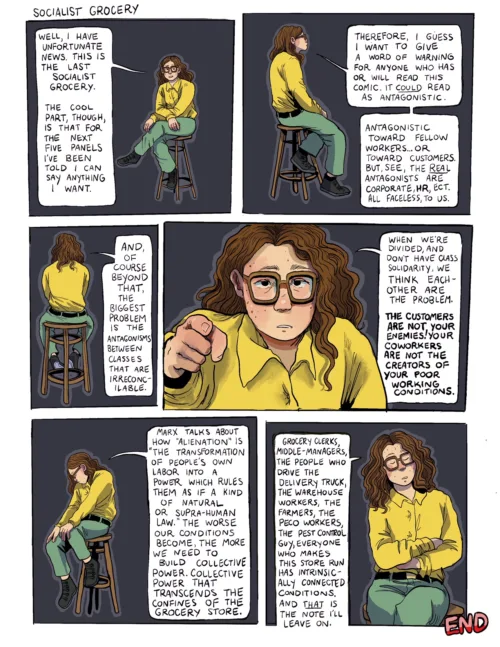In the major retrospective of his drawings at Artists Space, The Pleasure of Play, the public gets a look into the mind of Tom of Finland, a master of the homoerotic, who played with proportions, politics, taboos, and masculinity as a whole to create the beefcakes that have tantalized the underground for years, and have recently re-emerged into public consciousness as early subversive titans.
Beef: It’s what’s for dinner
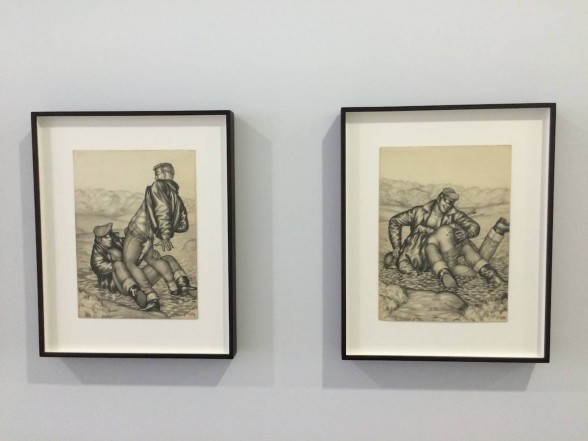
Whether you know his name or not, you have absolutely seen the work of Tom of Finland (Touko Laaksonen, 1920-1991). His depictions of thick, muscled bodies with their bulging thighs and arms; high pectorals and bubble butts; and sweet Teutonic faces playing the role of every desirable type of macho man under the sun have exaggerated the male ideal to comical proportions. With self-assured grins that seem to be directly linked to what they boast below the belt, the anonymous characters in this work interact with each other in pornographic fantasies in an eye-opening array of sexual positions and situations. Without them, we would lack the particular aesthetic of Folsom Street Fair, all-male revues, and a great deal of contemporary gay Internet porn.
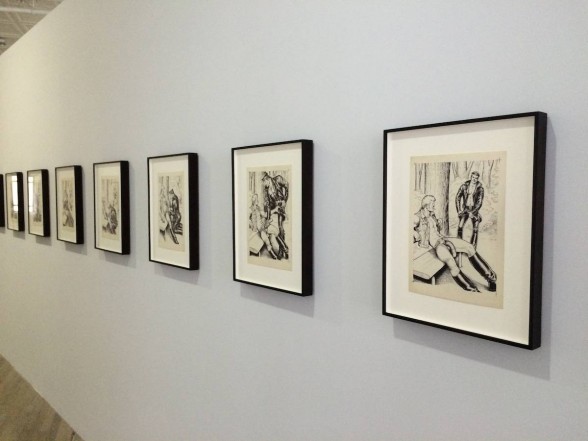
The works, all without titles but dated, run down long white hallways in the gallery, evenly spaced and mostly all the same size, mainly because of their frequent publication in Bob Mizer’s Physique Pictorial: an early beefcake magazine devoted to “bodybuilding” photographs and homoerotic drawings. Most are done in graphite, gouache, and ink, presented matter-of-factly in simple black frames, so not to take away from the bold nature of the drawings. This facilitates an easy segmentation of ideas and themes, each hall holding its own story or era in the artist’s career. It’s meditative, if not conservative, but I believe there is no other way this art can be shown, particularly with a series of works that are ordered like a film’s storyboard (that is to say, a film with an X rating, shown in a seedy theater above an adult bookstore).
Storylines and subjugation

Narrative plays a key role in Tom’s work; he uses his studs like paper dolls in a fantasy play of his own design. One particular hall shows a row of drawings that depict a cruising scene, where his men engage in public sex acts in a park, which soon becomes a full-blown orgy of a dozen men. On another wall, the story of two leather-clad bikers who skid off the road becomes blatantly scatological as they smear each other’s bare buttocks with mud and wrestle in filth. In yet another, rival bikers take revenge on each other by submitting their enemy to sodomy and assorted forms of humiliation. These scenes might sound grotesque, but displayed in the context of fine art as they are at Artists Space, there is something very liberating about them–about how early they were made and how openly and graphically they show sex acts we still do not discuss outside the boudoir.
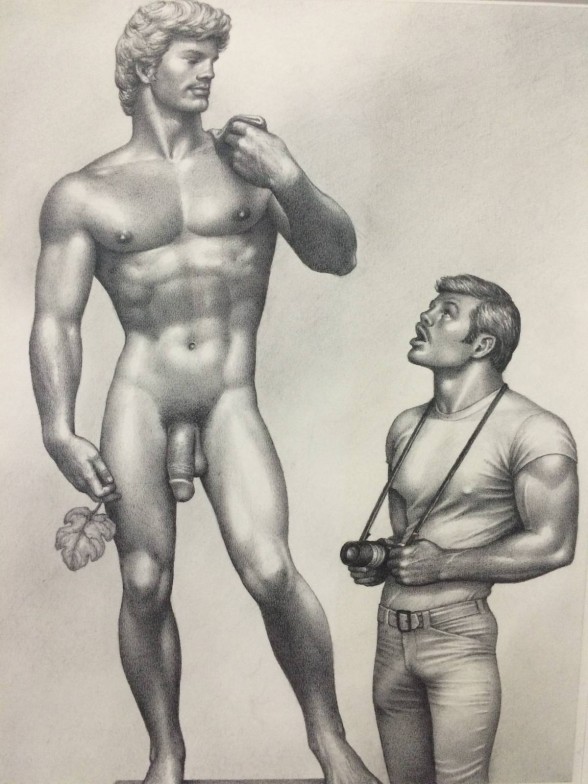
Transforming archetypes
There are also some particular highlights of his later career, including a multitude of works depicting black characters. There are works that show black men in sexual situations with each other, but also engaging with police. Sometimes the black men are subjugated to humiliation and physical violation by several cops at a time, while in other pictures black men do the same to their white oppressors. The work comments on institutional violence, but also makes bold claims about race fetishism, switching of power roles, and whether consent or political correctness plays into fantasy. Robert Mapplethorpe, who was Tom’s friend and patron, also dipped into this political/sexual/racial well in his photographs of sexualized black men. In another late work, there is a sketch in which a man receives fellatio while wearing a condom, rare and pivotal in the onset of the AIDS epidemic.
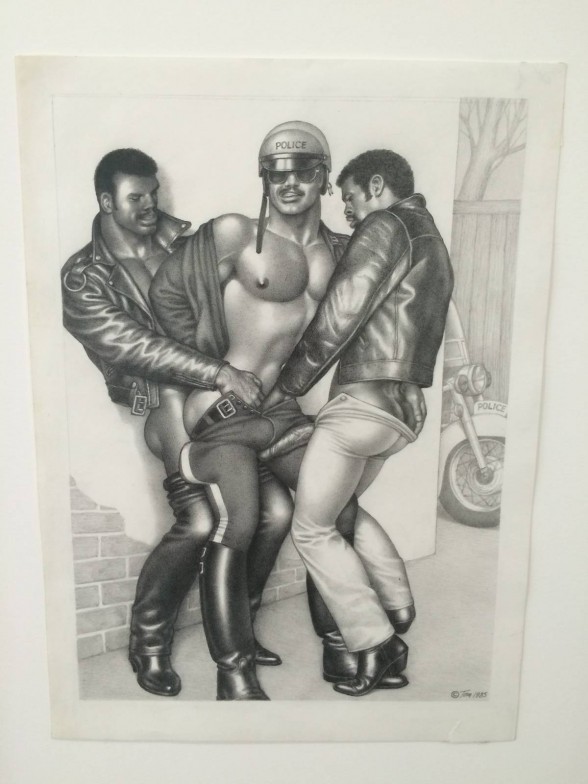
The show also documents the artist’s early advertising and fashion sketches, as well as a thorough archive of his source material, cut from magazines of uniforms, celebrity headshots, and black-and-white male-on-male pornography, kept in lit vitrines in the auxiliary space located a block away from the main gallery.
We get to view the full breadth of characters Tom utilized: bikers, truckers, mountain men, policemen, Boy Scouts, sailors, bodybuilders, military men, and punk rockers. These male archetypes, particularly in our views of gay men, have transformed gay men from the proverbial sissy into those who exist in even the most concentrated centers of masculinity. What all of these groups have in common is that their communities are built on male bonding, levity, and a certain comfort with the male body and in turn, each other. The joy of Tom’s men is obvious, with camp appeal and even humor interwoven into even the most graphic pieces.
But more than that, his work is political, and speaks of the sexual revolution that took place during its creation. In 1984, Tom and Durk Dehner created the Tom of Finland Foundation, which is dedicated to creating a safe haven for erotic art–a one-time déclassé art world niche. Nowadays, Tom of Finland is seen as a hero of gay culture and erotic art; his works appear in solo and group shows in galleries and museums, and have been bought by august institutions like MoMA, LACMA, LAMoCA, SFMoA, The Art Institute, and many others. His works clearly led the way to liberating erotic art from the bedroom and into the art mainstream–and he can certainly be credited with helping to bring gay art out of the closet.
Tom of Finland: The Pleasure of Play is on view at Artists Space (38 Greene Street, 3rd floor, New York, NY 10013). The show has been extended until Sept. 13, 2015.


